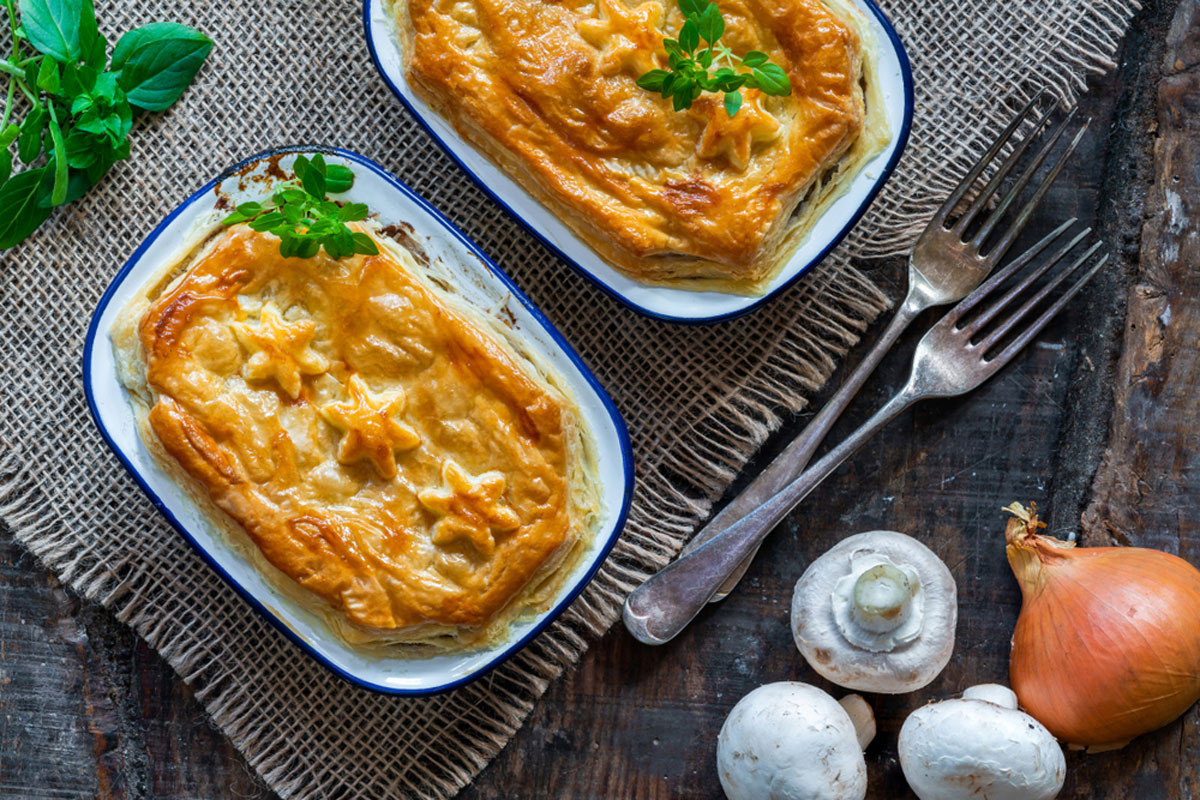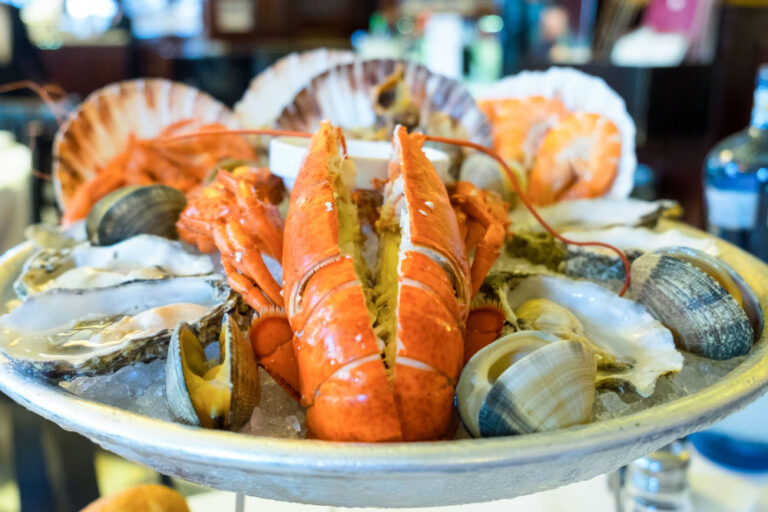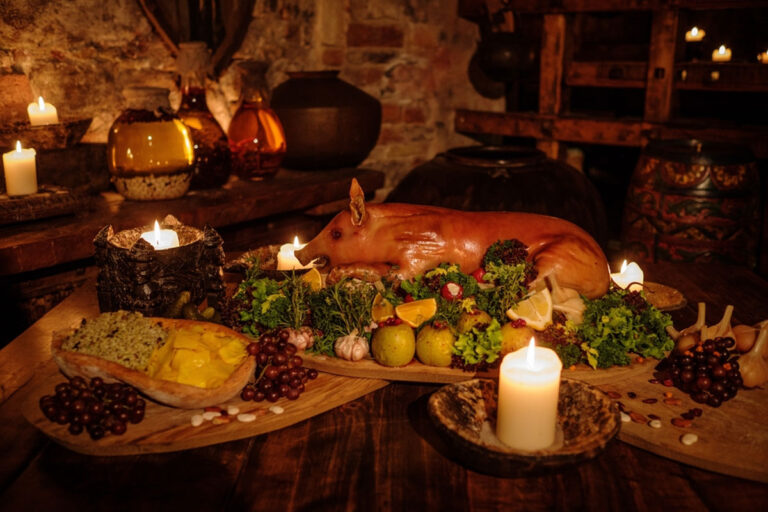The History of Pies in Ireland
Pies hold a cherished place in Irish culinary tradition, weaving together centuries of history, regional flavors, and cultural influences. From rustic, savory dishes that warmed the hearths of rural households to sweet, celebratory bakes gracing festive tables, pies are more than just food—they are a testament to Ireland’s rich heritage.
Ancient Roots
The story of Irish pies begins in ancient times, when the first versions were simple meat-filled pastries, often made to preserve ingredients for longer. Early crusts, known as “coffyns,” were dense and inedible, serving merely as a vessel for cooking and storage. This utilitarian approach laid the groundwork for pies to evolve into a beloved culinary art form.
Influence of the Land
Ireland’s lush pastures, abundant livestock, and fertile soil shaped the flavors of its pies. Beef, lamb, and pork became staples for savory pies, while apples, rhubarb, and berries made for delectable sweet fillings. Regional variations developed, with coastal communities incorporating seafood into their pies and inland areas favoring hearty meat and vegetable combinations.
British Influence and Innovation
During the Norman and later British occupations, pie-making techniques were refined and introduced to Irish kitchens. The introduction of butter into pie crusts created the flaky, golden pastry we know today. Mince pies, savory creations initially filled with spiced meats, transitioned into the sweet, festive treats enjoyed at Christmas—a tradition that endures in Irish households.
A Symbol of Community
In rural Ireland, pies were often a communal effort. Families gathered to prepare them for fairs, weddings, and wakes, where they became symbols of sharing and celebration. The pie’s portability made it an ideal offering for workers in the fields or as a gift to neighbors, fostering a sense of community and generosity.
The Pie Renaissance
Today, Irish pies are experiencing a renaissance. Modern chefs are reinventing classic recipes with creative twists, while home cooks continue to celebrate traditional favorites. Whether it’s a flaky steak and Guinness pie or a spiced apple tart, pies remain a beloved staple in Irish kitchens, embodying a sense of nostalgia and comfort.
A Deep Dive into Savory Irish Pies
Savory pies have been a cornerstone of Irish cuisine for centuries, providing hearty, flavorful meals that bring comfort on even the coldest of days. These pies reflect Ireland’s agricultural abundance and are a testament to the creativity of Irish cooks, who turned humble ingredients into timeless classics.
1. Steak and Guinness Pie: A True Icon
The steak and Guinness pie is perhaps the most celebrated savory pie in Ireland. Tender chunks of beef, slow-cooked in a rich Guinness-infused gravy, are encased in a golden, buttery crust. The deep, malty flavor of the stout perfectly complements the savory richness of the beef, creating a dish that’s both robust and comforting.
- Regional Twist: Some variations include root vegetables like carrots and parsnips or a topping of puff pastry instead of a fully enclosed pie.
- View our recipe
2. Cottage Pie: The Farmer’s Favorite
Cottage pie is a quintessential dish of the Irish countryside, though it technically isn’t a pie in the traditional sense, as it uses mashed potatoes instead of pastry. Minced beef or lamb is cooked with onions, carrots, and peas, then topped with creamy mashed potatoes, which are baked until golden and crisp.
- Historical Note: During tough economic times, this dish became a staple because it used affordable, readily available ingredients.
- Read our article: “Comforting Classics: Delving into the world of cottage pie and shepherd’s pie”
3. Chicken and Leek Pie: A Creamy Classic
Chicken and leek pie showcases the lighter side of Irish savory pies. Tender chicken, leeks, and a creamy béchamel sauce are wrapped in a flaky pastry crust. This pie is a favorite for family dinners and gatherings, offering a delicate yet satisfying flavor.
4. Seafood Pie: A Coastal Specialty
In coastal regions of Ireland, seafood pie has long been a specialty. A creamy mixture of fresh fish, prawns, and sometimes mussels is cooked with herbs and a touch of cream, then baked under a layer of mashed potatoes or pastry.
- Popular Variations: Smoked salmon and haddock often feature in this dish, lending a rich and savory depth.
- View our fish pie recipe
5. Lamb and Mint Pie: A Taste of the Pasture
Ireland’s lush green fields are ideal for raising sheep, making lamb a popular pie filling. Lamb and mint pie combines tender chunks of lamb in a rich gravy with the refreshing bite of mint, all wrapped in a golden crust. This dish is a celebration of Ireland’s pastoral heritage.
Savory pies are more than just a meal—they’re an expression of Irish hospitality, resilience, and resourcefulness. Whether served in a traditional pub or a contemporary bistro, these pies connect Ireland’s culinary past to its vibrant present.
The Sweet Side of Irish Pies
While savory pies provide hearty sustenance, sweet pies bring a touch of indulgence to Irish cuisine. These desserts celebrate the bounty of Ireland’s orchards and hedgerows, transforming simple ingredients into comforting, nostalgic treats.
1. Irish Apple Tart: A Timeless Classic
The Irish apple tart is a staple of homes and bakeries across the country. Unlike its deeper American cousin, this tart is thinner and often features a flaky, buttery pastry encasing tart cooking apples, such as Bramleys. A sprinkling of sugar before baking creates a lightly caramelized crust.
- Serving Tip: Best enjoyed warm with a dollop of cream or a scoop of vanilla ice cream.
- View our recipe
2. Rhubarb Tart: A Tangy Delight
When rhubarb comes into season in spring, Irish kitchens come alive with the aroma of rhubarb tart. The sharpness of the rhubarb is balanced by the sweetness of sugar, and the buttery crust adds a rich texture.
- Regional Variation: Some families add strawberries or ginger for a unique twist.
- View our recipe
3. Mince Pies: A Festive Favorite
Though originally filled with spiced meat, modern Irish mince pies are sweet and synonymous with Christmas. These bite-sized pastries are filled with a mixture of dried fruits, spices, and a touch of Irish whiskey, all encased in a shortcrust pastry.
- Tradition: It’s considered good luck to eat one mince pie each of the 12 days of Christmas!
- View our recipe
4. Blackberry and Apple Pie: A Forager’s Treat
Ireland’s hedgerows burst with wild blackberries in late summer, and they often find their way into pies alongside apples. This combination creates a beautifully balanced dessert, blending the tartness of the blackberries with the mellow sweetness of the apples.
- Popular Addition: A crumble topping is sometimes used instead of pastry for added texture.
- View our recipe
5. Treacle Tart: A Taste of Simplicity
Though better known in England, treacle tart has made its way into Irish baking traditions. It’s made with golden syrup, breadcrumbs, and lemon juice, creating a sticky, tangy filling baked in a shortcrust pastry.
- Irish Touch: Some bakers add oats to the mix, drawing on the country’s love for this humble grain.
- View our Treacle Tart recipe
Sweet pies are a celebration of Ireland’s natural abundance, turning seasonal produce into desserts that evoke family gatherings and festive occasions. From the tart bite of rhubarb to the comforting warmth of Christmas mince pies, these treats hold a special place in Irish hearts and kitchens.

From Hearth to Pub – How Irish Pies Became a Culinary Staple in Modern Dining
Pies, once a humble staple of rural kitchens, have evolved into a celebrated feature of Irish pubs and modern dining. They’ve seamlessly transitioned from being hearty home-cooked meals to becoming star attractions on restaurant menus, blending tradition with innovation.
The Pub Revolution
Irish pubs have always been more than places to enjoy a pint—they are community hubs where food plays an integral role. Pies have long been a pub favorite due to their comforting, filling nature. Dishes like steak and Guinness pie or chicken and mushroom pie are staples in traditional Irish pubs, served piping hot with a side of creamy mashed potatoes or crisp chips.
Why Pies Work in Pubs:
- Their hearty, satisfying portions appeal to diners seeking comfort food.
- They pair perfectly with Ireland’s iconic beverages, like a pint of stout or a glass of cider.
The Gastro Pub Influence
The rise of the gastro pub—a modern pub offering elevated, restaurant-quality dishes—has given new life to Irish pies. Chefs in these establishments have refined old recipes, focusing on high-quality, locally sourced ingredients. Steak and Guinness pie might now include dry-aged beef, while chicken and leek pie could feature organic chicken with wild garlic and cream.
Examples of Modern Twists:
- Seafood pies using sustainably sourced prawns and smoked haddock.
- Lamb and rosemary pies with flaky puff pastry and a hint of red wine.
Pies in Contemporary Irish Restaurants
As Irish cuisine has gained recognition on the global stage, pies have followed suit. Upscale restaurants often reinterpret the humble pie, presenting it with artistic flair. Miniature pies served as appetizers or deconstructed pies showcasing the fillings separately are examples of how chefs reimagine the classic dish.
- Example: A deconstructed apple tart might feature spiced stewed apples, shards of buttery pastry, and a drizzle of caramel sauce on a sleek plate.
The Farm-to-Table Movement
Ireland’s farm-to-table philosophy has further enriched its love for pies. Chefs and home cooks alike emphasize the use of fresh, seasonal produce in their pies, honoring the connection between food and the land. This approach breathes new life into time-honored recipes, keeping them relevant for modern palates.
Seasonal Specialties:
- Summer: Blackberry and apple pies.
- Winter: Rich, slow-cooked meat pies, like venison or duck.
Beyond Ireland’s Borders
Irish pies have also gained popularity internationally. Irish pubs around the world proudly serve traditional pies, offering a taste of home for expats and an authentic culinary experience for locals.
The enduring appeal of Irish pies lies in their versatility. Whether served in a rustic countryside pub, a trendy city bistro, or at a family dinner table, they remain a symbol of Ireland’s culinary heritage and its evolving food culture.
The Future of Irish Pies – Preserving Tradition While Embracing Innovation
As Ireland’s culinary scene continues to evolve, pies remain a cornerstone of its food culture. The future of Irish pies lies in the delicate balance between honoring time-honored recipes and embracing new techniques, flavors, and dietary trends.
A Commitment to Tradition
The deep emotional connection many Irish people have with pies ensures that traditional recipes will never disappear. Home cooks, bakers, and chefs will continue to recreate classics like steak and Guinness pie, rhubarb tart, and mince pies, often using family recipes passed down through generations.
- Revival of Forgotten Recipes: Culinary historians and enthusiasts are rediscovering long-lost Irish pie recipes and techniques, bringing them back into kitchens and onto menus.
Innovation in Flavors and Ingredients
Modern Irish chefs are reimagining pies with bold flavors and unique ingredients while still respecting their roots. Some exciting trends include:
New Flavor Pairings:
- Savory pies featuring wild game, exotic spices, or craft beer reductions.
- Sweet pies combining Irish-grown produce with global influences, such as adding cardamom to an apple pie or pairing rhubarb with orange blossom water.
Vegetarian and Vegan Options:
- Mushroom and stout pies or vegetable-filled tarts with plant-based puff pastry.
- Sweet pies made with dairy alternatives like oat milk custards or coconut cream toppings.
Sustainability and Locally Sourced Ingredients
As sustainability becomes a priority, many Irish chefs and home cooks are embracing local, seasonal, and organic produce. This movement not only supports farmers and reduces carbon footprints but also enhances the flavors of Irish pies.
- Wild Ingredients: Foraged blackberries, wild garlic, and even seaweed are being incorporated into pies to highlight Ireland’s natural bounty.
Adapting to Modern Dietary Trends
Pies are being adapted to suit diverse dietary needs, making them accessible to a wider audience:
- Gluten-Free Pastry: More bakers are experimenting with alternative flours like almond, oat, or buckwheat to create gluten-free crusts.
- Health-Conscious Variations: Lighter fillings and whole-grain crusts appeal to health-conscious diners, without sacrificing flavor.
The Role of Technology
Technology is also shaping the future of Irish pies. From precision baking techniques to interactive dining experiences, innovation is giving this classic dish new life:
- Smart Kitchens: Home cooks use smart ovens and apps to perfect their pies with consistent results every time.
- Augmented Reality (AR) Menus: High-end restaurants may showcase the story of their pies, from farm to table, through AR experiences.
Pies as Global Ambassadors of Irish Cuisine
As Irish food continues to gain international acclaim, pies are becoming cultural ambassadors. Irish pubs and restaurants worldwide are offering classic pies with a modern twist, introducing global audiences to Ireland’s culinary heritage.
- Export of Artisanal Pies: Irish pie makers are gaining recognition for creating premium, ready-to-bake pies that bring the taste of Ireland to overseas markets.
The Future is Bright (and Flaky)
Whether steeped in tradition or pushing the boundaries of creativity, pies will always hold a special place in Irish culture. They represent comfort, connection, and innovation—a dish that evolves alongside the people who love it.
As chefs, bakers, and home cooks continue to celebrate the Irish love affair with pies, this cherished dish is set to remain an enduring symbol of Ireland’s rich culinary tapestry.







